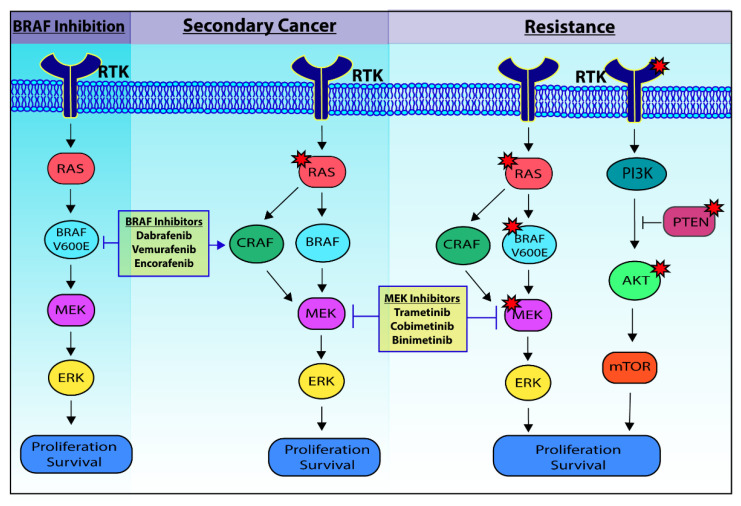Figure 2.
BRAF inhibition and genetic mechanisms of secondary cancer and resistance. BRAF Inhibition: BRAFV600E results in constitutive activation of the pro-survival MAPK pathway. BRAF inhibitors target the oncogenic BRAF mutation and initially are highly effective. Secondary Cancer: BRAF inhibitors can paradoxically activate the MAPK pathway in cells with wild type BRAF and oncogenic RAS mutations by signaling through CRAF, resulting in cSCC development. The occurrence of cSCC is reduced when MEK inhibitors are used to further restrict the activation of the MAPK pathway. Resistance to both BRAF inhibition and MEK inhibition predominately develop through RAS, BRAFV600E, MEK, RTK, PTEN, or AKT mutations indicated by red stars. These mutations either reactivate the MAPK pathway or upregulate the PI3K/AKT/mTOR pro-survival pathway. cSCC, cutaneous squamous cell carcinoma; RTK, receptor tyrosine kinase; MAPK, mitogen activated protein kinase; BRAF, v-Raf murine sarcoma viral oncogene homolog B; ERK, extracellular signal-regulated kinase; MEK, MAPK/ERK Kinase 1; RAS, rat sarcoma; AKT, protein kinase B; PI3K, phosphoinositide 3-kinase; mTOR, mammalian target of rapamycin; PTEN, phosphatase and tensin homolog.

